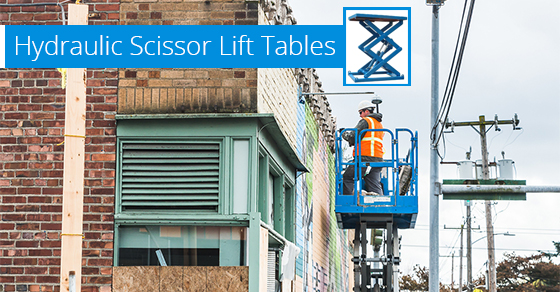The hydraulic scissor lift table is a very common industrial lift. There are many advantages to using a scissor lift: the ability to move heavy loads, ease of operation, reduction in fatigue and risk of injury as well as reduction in work time. The scissor lift comes in a variety of sizes and takes up very little space whenever it is not in use. But how does it work? The scissor lift is not as complicated as it looks. It is actually made up of simple parts that each have a specific function to make the machine work the way it does.
What are the parts?
Platform
This is the main part of the table where the load can rest. The platform comes in a variety of sizes depending on what needs to be lifted. It can be anything from merchandize to cars.
Base
The base is the rectangular structure the machinery stands on. It is also the track along which the scissor legs run (in a back and forth motion).
Scissor Legs
The scissor legs are what allows the machine to adjust its reach. They are shaped like pairs of scissors hence the name.
Hydraulic cylinder
The hydraulic cylinder is what allows the scissors to move. There are usually one to three cylinders between the scissors depending on the model. This enables the scissors to lift and lower the table that is on top of it.
Motor
The motor is the engine of the machinery. This is where the machine gets all its power from and it is situated adjacent to the cylinder (s).
How the table is operated
When fluid is forced into or out of the hydraulic cylinder (s) the lift table is either raised or lowered. The force of fluid is what forces the legs apart.
How the lift table is raised
As fluid rushes into the cylinder the table is raised. The front ends of the scissors are supported by wheels that run along the base like a train on a track. The cylinder can maintain its raised position because the fluid is kept in check by a valve. The speed and capacity of the table is determined by the level of horse power in the engine.
How the lift table is lowered
The lift table is lowered when fluid is carefully released from the cylinder. The speed of the table’s descent is determined by how fast fluid is flowing out of the cylinder. The speed is controlled by a special control valve.


